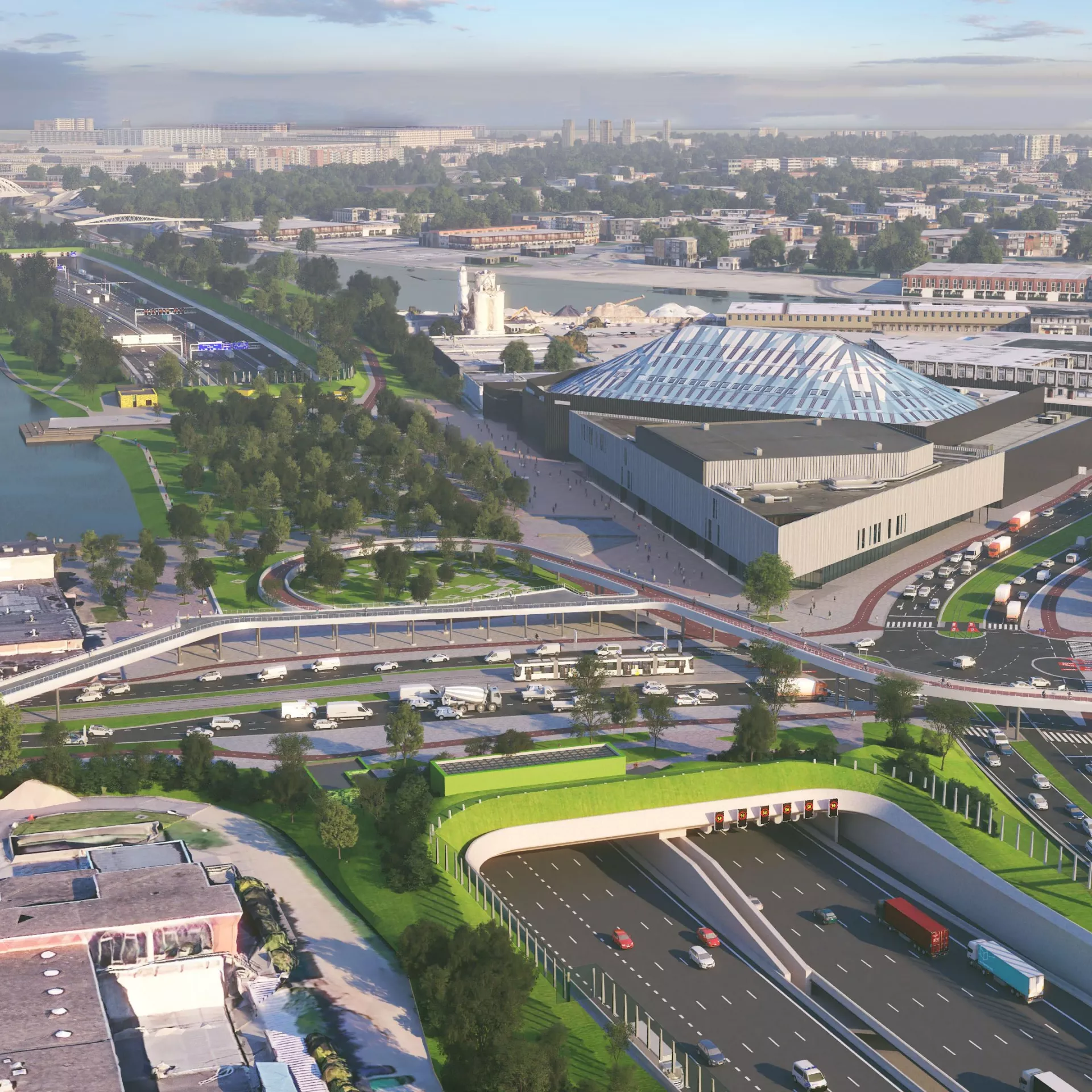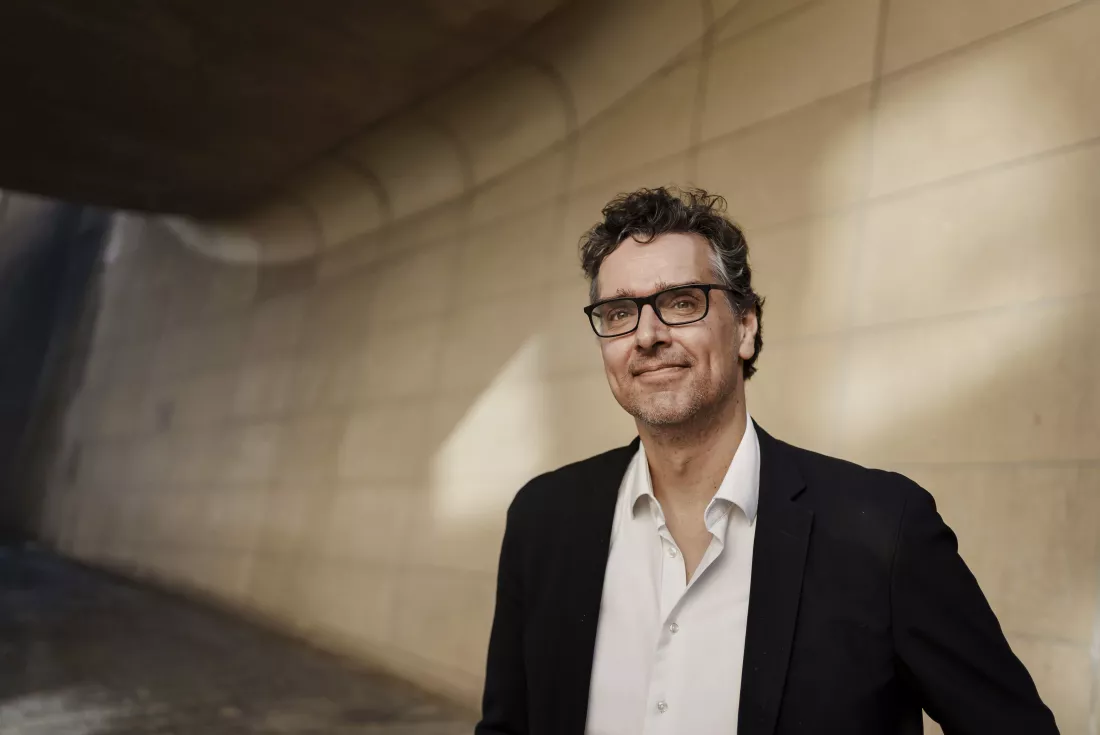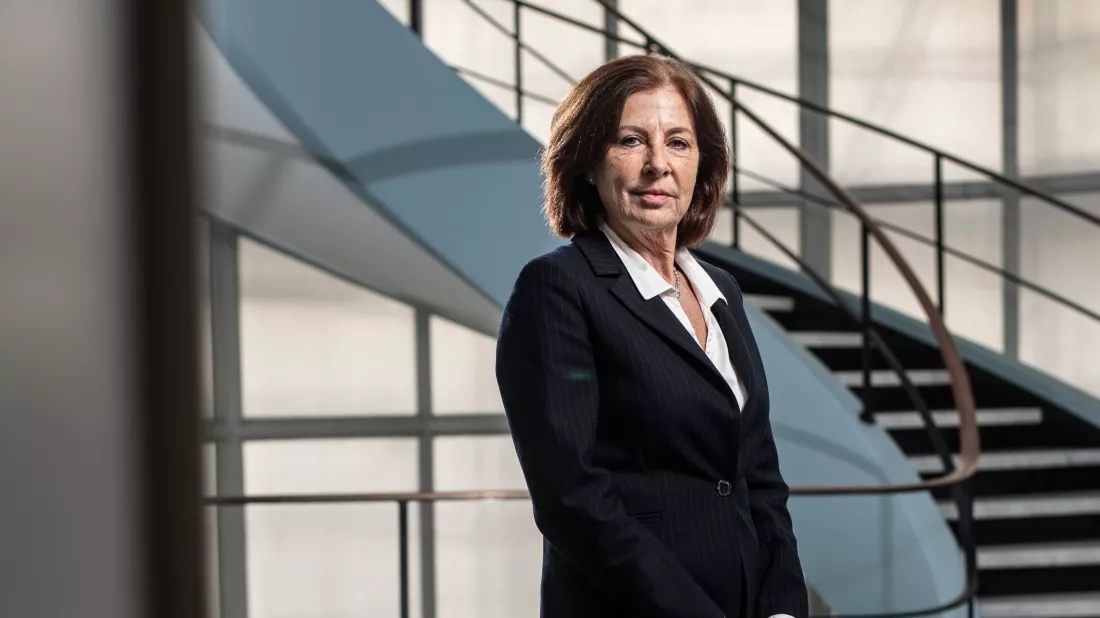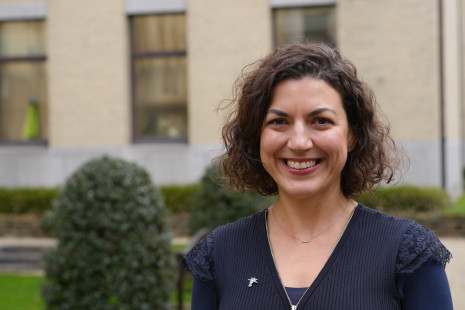Alexander D’Hooghe & Manon Janssen
Architect of the Big Link & CEO of Ecorys
The goal is to reach climate neutrality and climate robustness by 2050. We’re making sure the city is well adapted to meet the challenges.

Alexander, in your work you focus on large-scale contemporary design problems. How would you describe The Big Link infrastructure project in Antwerp?
Alexander: “We transformed the project from a being solely a mobility challenge which sought to close the ring road in Antwerp, into a project that also focuses on city liveability. By covering parts of the ring road, we’ll create more open spaces. We’re also making Antwerp more resilient to climate change. Why the name ‘The Big Link’? Well, we’re not only linking the roads, we’re also linking people and neighbourhoods. Seven ring parks will act as one large green ecological corridor.”

Manon, you are an ambassador for Antwerp`s climate policy. Sustainable infrastructure like The Big Link is probably not the only strategy in the fight against climate change?
Manon: “The goal is to reach climate neutrality and climate robustness by 2050. We’re making sure the city is well adapted to meet the challenges. Antwerp is focusing on renovating large apartment buildings. They emit significant amounts of carbon dioxide and are therefore a major opportunity. Antwerp left bank is a good example of this. On the river Scheldt’s left bank, the city is offering financial support for a climate-friendly renovation of 15 old buildings, representing 173 housing units. That will mean significantly less energy consumption once the renovation is completed.”
Speaking of the left bank of the river Scheldt, discussions on reclosing the ring road in that part of the city have been going on for some time. Alexander, how did you accomplish this breakthrough?
Alexander: “When I arrived here, I could sense how desperate the issue had become. The challenge attracted me! We worked to create a agreement among all stakeholders: governments, action committees, citizen movements. Together, we decided on a common vision for the future. You know, Antwerp has a long tradition of discussion and disagreement. It’s part of the city’s tradition of tolerance and openness. All opinions matter. I find it very powerful that all these people from various walks of life have agreed on something, without denying their differences in the way they look at life.”

The Big Link and Linkeroever are promising projects that will shape Antwerp`s future. Manon, what else can Antwerp do to reach the climate goals of 2050?
Manon: “An interesting example is what we call heat networks. These networks replace fossil fuels that are used today with residual heat from geothermal energy or waste water, which would otherwise be lost. By connecting large buildings like hospitals to these networks, we can save up to 80,000 tonnes of carbon dioxide emissions per year. That’s major.”
What about the important urban renewal project Master Plan Scheldt Quays?
Manon: “The city will focus on floods, droughts and protection against heatwaves. Master Plan Scheldt Quays focuses on protecting the city from both sea level rise and fluvial floods. At the same time, quays are being renovated, transforming this area into one of the most prominent public spaces in the city. To manage drought, a master plan to collect water is developed. The renovation of the South docks is a good example, featuring rain gardens, wadis, mirror ponds and an emergency water buffer. Regarding heatwaves, we will focus on greening the city further and providing many cooling spots, resulting in an attractive, lively and sustainable city.”
The city has sustainability on every agenda. What’s the role of the citizens for example in The Big Link?
Alexander: “We’re designing everything together. We invited citizens to the table and created designs from the bottom up. To me this is a new definition of urban innovation: rethinking the basic infrastructure and how it can serve us. I work in many places around the world, in the US, Africa and Europe - but I don’t see this happening anywhere else. It’s a bit like building a cathedral in the Middle Ages. People didn’t exactly know where it would end. I consider The Big Link to be a rolling programme. In the end, we will have a large park system in a densely populated area, a new cycling bridge over the river Scheldt, we will have fewer health issues and many more mobility options. We’re creating the city of tomorrow and I believe we’re setting an example for the rest of the world.”
More stories
